Flying cars, robots, doctors and blockchain: what came true in 2018
Entrepreneurs and inventors each year promise to open a brave new world with the help of technology, but not all of the declared they succeed. We in the Binary District chose five techno-forecasts for 2018 and checked which ones turned out to be unrealizable and which ones were quite real.
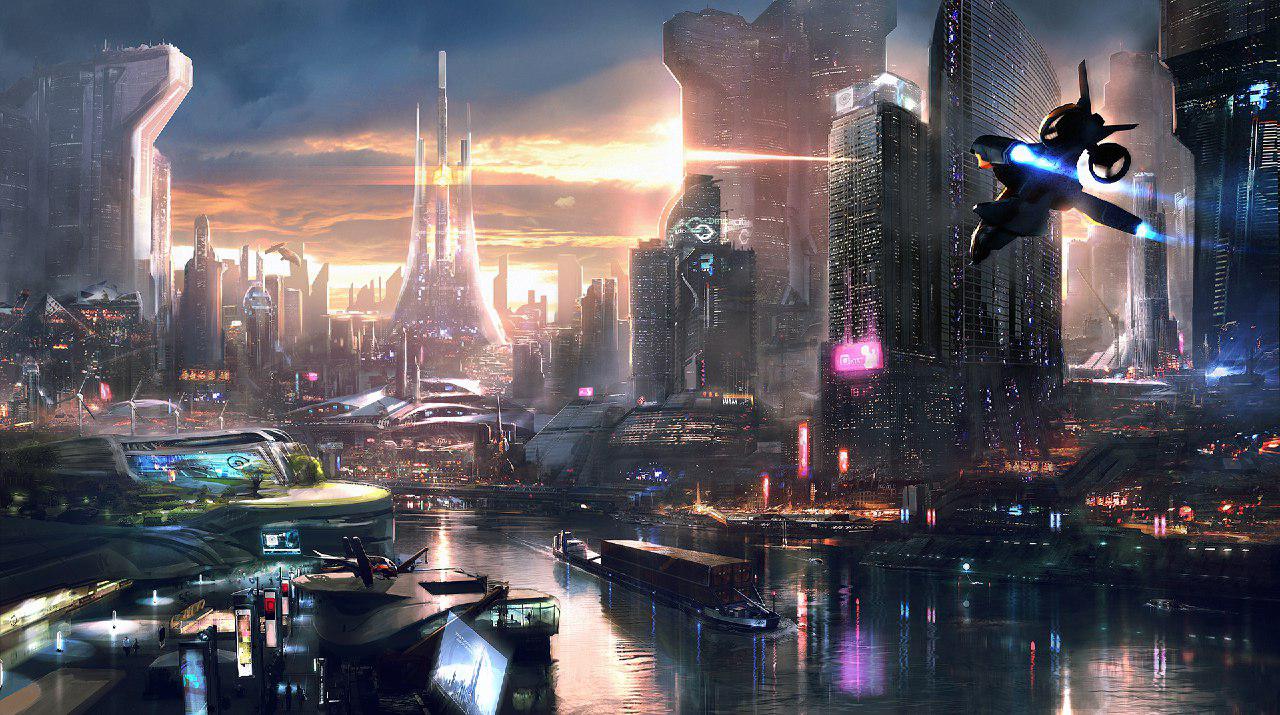
Several companies around the world have promised to start selling flying cars in 2018.
Among them:
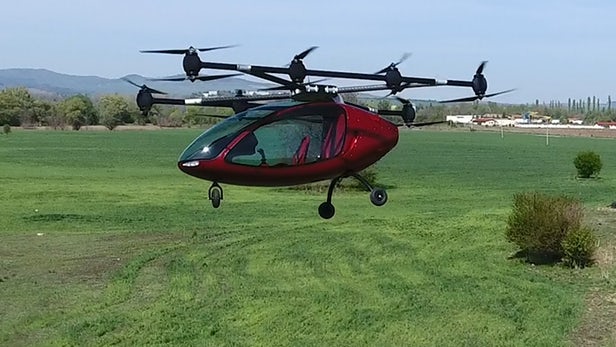
Passenger Drone in 2018 did not report the start of sales. Dutch Pal-V moved its plans for 2020: car owners will be the first to be able to buy cars in the UK. American Kitty Hawk in June of this year showed a new version of the car. The start of sales, however, was also not reported.
Hoversurf's Russian hoverbikes turned out to be dangerous for drivers: four huge propellers were spinning too close to the rider's body. The new improved version will begin to be sold in the second half of 2019.
Most other manufacturers of flying cars initially planned to start sales no earlier than 2020.
Over the past ten years, this forecast has already seemed to be a bit dry: almost every year we live in anticipation of a seizure, which, as it seems at first glance, everything will not happen. In 2017, the American research company Forrester Research announced that every eleventh job in 2018 will be taken by robots. According to her, in 2018, automation had to destroy 9% of jobs.
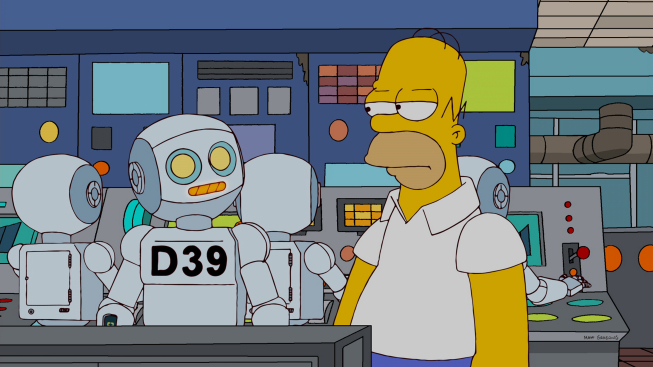
Robots really have already replaced people in many areas: mainly it concerns routine work. So, Alfa-Bank in 2018 automated seven operations at once. Among them: processing of payments of legal entities and individuals, processing of unidentified payments, analysis of internal incoming mail, change of customer data on his application, editing of loan agreements of individuals on their applications, as well as posting funding contacts and responses to typical requests.
Alfa-Bank uses the Blueprism platform for working with robotic programs. Each robot receives a virtual workplace, on which the Blueprism agent is installed and the software required for operation. Further, the system is taught by a person familiar with the business process of the bank and with the technology of learning robots. As a result, the robot performs the same actions as the live operator, but around the clock and without errors. This allowed the bank not to expand the staff of tellers and save 20 million rubles. In the future, the bank plans to automate even more operations and save up to 85 million rubles annually.
At times, the replacements also concern the creative areas: the portrait created by AI was first sold at auction- by the way, for a decent amount. And at the end of this year, the Xinhua news agency reported that artificial intelligence “replaced” one of the Chinese TV presenters as an experiment .
At the same time, robots create new vacancies. This conclusion was reached in 2018 by analysts of the World Economic Forum, analyzing 50 million online vacancies in the United States.
According to the report , by 2026, automation and the use of artificial intelligence will reduce the number of jobs by 1.1 million, but instead 11 million new vacancies will be created. The main skills that specialists will need in the future are the ability to solve complex problems (without a single solution), critical thinking and creativity.
In 2016, the American research company Gartner, specializing in information technology markets, for the first time included the blockchain in the top 10 strategic trends. PriceWaterHouseCoopers at the same time called the blockchain breakthrough technology for corporations.

The results of a survey of Gartner, conducted in 2018 among 300 IT directors, showed that the use of the blockchain is still at an early stage. Only 1% of respondents were able to talk about implemented solutions based on this technology, another 8% planned to implement something.
Despite this, even 1% is not so little if leading companies are among such enterprises. The blockchain is most actively implemented, according to the same study, in the financial sector, telecom and insurance. Sberbank earlier this year reportedthat opened a blockchain lab. According to the bank, before that he had already launched more than 20 different pilot projects on the blockchain, including business solutions for Severstal, M.Video, the Federal Antimonopoly Service (FAS), which are used in practice.
Blockchain is also used in retail and other areas. One of the most unusual examples, which toldIBM system architect in Russia and the CIS, speaker of the Blockchain Weekend at the Binary District, Vladimir Alekseev, was represented at Walmart. In 2017, with the help of IBM, the retailer launched a food safety project based on the open blockchain platform HyperLedger Fabric. The technology allows you to combine all the documentation on the food supply chain, in particular - pork, and not allow counterfeit to go to the store.
AI will replace 80% of doctors - such a provocative statement by a US investor, billionaire Vyhod Khosla made in 2012. Traditional medicine, he said, had already forced doctors to "wallow in a voodoo-swamp practitioner". Machines that will use big data and strong computing power are much cheaper, more accurate and more objective than the average doctor, he said.
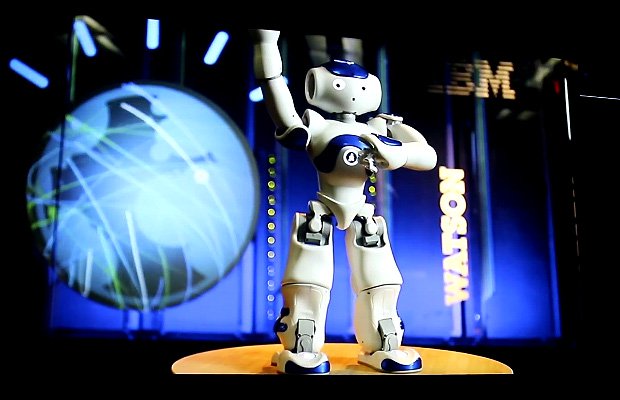
One of the first examples of the use of AI in medicine was the IBM Watson Health system. Back in 2016, she began to help doctors diagnose: recognize vein thrombosis, cardiomyopathy and heart attacks. There is a case in which IBM Watson identified a rare form of leukemia in a 60-year-old patient who was initially diagnosed incorrectly. To do this, the system for ten minutes studied 20 million scientific articles on cancer.
In 2018, several new examples appeared in the world practice, when artificial intelligence also turned out to be better than a living doctor.
Among them:
In Russia, the most famous such technology is the Botkin.AI cancer diagnostics system. The system recognizes cancer by computed tomography of patients or a series of X-ray pictures of organs. Service launched in May 2017. In early 2018, a pilot project using Botkin AI began in a hospital in the Murmansk region.
The forecast of Khosla, thus, partially justified himself. Most technologies with AI in medicine, however, are still at the testing stage.
More and more game lovers want to feel as heroes of the movie “Prepare for the First Player”, without releasing the smartphone from their hands. According to CCS Insight, sales of virtual and augmented reality headsets for phones in 2018 should have amounted to 22 million worth $ 1.8 billion. By 2022, according to the agency, the sale of such equipment should have jumped five times and reached 121 million pieces
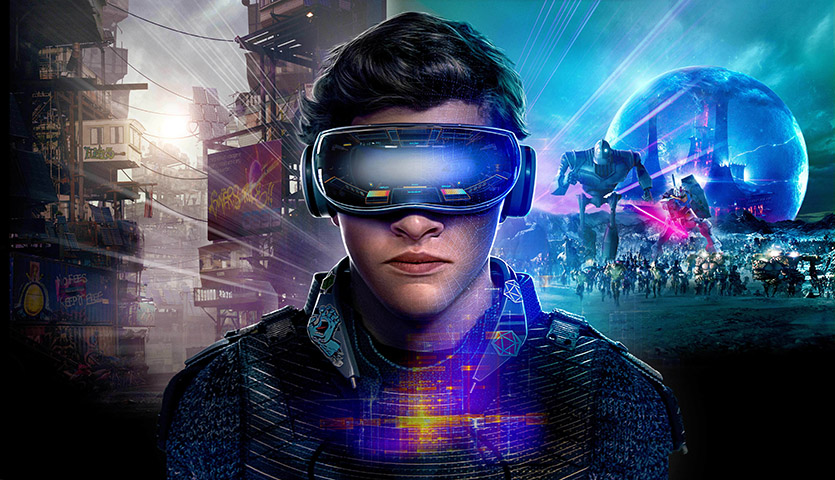
Over the year, the market for VR- and AR-headsets, according to the same CCS Insight, sank by 20%. Cheap and low-functional smartphone-dependent headsets are already fed up with customers: the development of new autonomous devices can now only reanimate the market . According to analysts, Facebook Oculus Go and Oculus Quest, which are offered at retail prices of $ 200 and $ 400, can be good examples of the future VR market.
The first of them - Facebook Oculus Go, works without connecting to a smartphone or computer. Inside it is a data processing chip and displays for displaying a picture for two eyes. Two speakers are also built into the case, but if necessary, you can connect other headphones through a 3.5-mm audio jack.
Oculus questIt also works without connecting to a smartphone and computer, but it has another major advantage. This is the first VR headset with six degrees of freedom: the system captures the bends and turns of the head in any direction. According to the company, this makes it possible to move through the virtual space "as in the material world." The system has more than 50 games installed, including the Robo Recall shooter, the climber simulator The Climb and the adventure puzzle Moss.
In the next few years, from 2018 to 2022, according to CCS Insight, the demand for stand-alone devices will grow 16 times. Dependent on PCs and smartphones, such as the Sony PlayStation VR, HTC Vive or Oculus Rift, will remain an important part of the market when they become wireless. In 2019, according to analysts, 5 million VR headsets will be sold, and in 2022, 18 million.

1. Flying cars go on sale
Several companies around the world have promised to start selling flying cars in 2018.
Among them:
- The Swiss company Passenger Drone, which presented its first passenger drone in Europe in the summer of 2017. The drone is built of composite carbon materials and has 16 rotors equipped with its own electric motor. He also has a joystick - in case you need to steer manually - and two passenger seats. The flight time of the drone is from 30 to 35 minutes at a speed of about 50 km / h.
- The Dutch company Pal-V opened sales of flying cars on its website in 2017. The first had to sell 90 premium copies of Pioneer Edition at a price of 600 thousand dollars apiece. It was noted that the more “cheap” version of the PAL-V Liberty Sport - worth 400 thousand dollars - will be available after that. The first cars should have been launched by the end of 2018.
- The American company Kitty Hawk is the second developer of flying passenger vehicles, funded by Google co-founder Larry Page. It was reported that a single aircraft was tested in April 2017 and as early as 2018 it may be available.
- Russian company Hoversurf entrepreneur Alexander Atamanov, who presented a flying Scorpion-3 motorcycle in the summer of 2017. The motorcycle accelerates to 70 km / h and can fly 21 km in 20 minutes. In early 2018, the company's website reported that the device can be purchased with delivery in June 2018 at a price of $ 59,900 apiece.

Reality
Passenger Drone in 2018 did not report the start of sales. Dutch Pal-V moved its plans for 2020: car owners will be the first to be able to buy cars in the UK. American Kitty Hawk in June of this year showed a new version of the car. The start of sales, however, was also not reported.
Hoversurf's Russian hoverbikes turned out to be dangerous for drivers: four huge propellers were spinning too close to the rider's body. The new improved version will begin to be sold in the second half of 2019.
Most other manufacturers of flying cars initially planned to start sales no earlier than 2020.
2. Robots will take people's places
Over the past ten years, this forecast has already seemed to be a bit dry: almost every year we live in anticipation of a seizure, which, as it seems at first glance, everything will not happen. In 2017, the American research company Forrester Research announced that every eleventh job in 2018 will be taken by robots. According to her, in 2018, automation had to destroy 9% of jobs.

Reality
Robots really have already replaced people in many areas: mainly it concerns routine work. So, Alfa-Bank in 2018 automated seven operations at once. Among them: processing of payments of legal entities and individuals, processing of unidentified payments, analysis of internal incoming mail, change of customer data on his application, editing of loan agreements of individuals on their applications, as well as posting funding contacts and responses to typical requests.
Alfa-Bank uses the Blueprism platform for working with robotic programs. Each robot receives a virtual workplace, on which the Blueprism agent is installed and the software required for operation. Further, the system is taught by a person familiar with the business process of the bank and with the technology of learning robots. As a result, the robot performs the same actions as the live operator, but around the clock and without errors. This allowed the bank not to expand the staff of tellers and save 20 million rubles. In the future, the bank plans to automate even more operations and save up to 85 million rubles annually.
At times, the replacements also concern the creative areas: the portrait created by AI was first sold at auction- by the way, for a decent amount. And at the end of this year, the Xinhua news agency reported that artificial intelligence “replaced” one of the Chinese TV presenters as an experiment .
At the same time, robots create new vacancies. This conclusion was reached in 2018 by analysts of the World Economic Forum, analyzing 50 million online vacancies in the United States.
According to the report , by 2026, automation and the use of artificial intelligence will reduce the number of jobs by 1.1 million, but instead 11 million new vacancies will be created. The main skills that specialists will need in the future are the ability to solve complex problems (without a single solution), critical thinking and creativity.
3. Blockchain solves all problems
In 2016, the American research company Gartner, specializing in information technology markets, for the first time included the blockchain in the top 10 strategic trends. PriceWaterHouseCoopers at the same time called the blockchain breakthrough technology for corporations.

Reality
The results of a survey of Gartner, conducted in 2018 among 300 IT directors, showed that the use of the blockchain is still at an early stage. Only 1% of respondents were able to talk about implemented solutions based on this technology, another 8% planned to implement something.
Despite this, even 1% is not so little if leading companies are among such enterprises. The blockchain is most actively implemented, according to the same study, in the financial sector, telecom and insurance. Sberbank earlier this year reportedthat opened a blockchain lab. According to the bank, before that he had already launched more than 20 different pilot projects on the blockchain, including business solutions for Severstal, M.Video, the Federal Antimonopoly Service (FAS), which are used in practice.
Blockchain is also used in retail and other areas. One of the most unusual examples, which toldIBM system architect in Russia and the CIS, speaker of the Blockchain Weekend at the Binary District, Vladimir Alekseev, was represented at Walmart. In 2017, with the help of IBM, the retailer launched a food safety project based on the open blockchain platform HyperLedger Fabric. The technology allows you to combine all the documentation on the food supply chain, in particular - pork, and not allow counterfeit to go to the store.
4. Artificial intelligence will treat patients better than doctors.
AI will replace 80% of doctors - such a provocative statement by a US investor, billionaire Vyhod Khosla made in 2012. Traditional medicine, he said, had already forced doctors to "wallow in a voodoo-swamp practitioner". Machines that will use big data and strong computing power are much cheaper, more accurate and more objective than the average doctor, he said.

Reality
One of the first examples of the use of AI in medicine was the IBM Watson Health system. Back in 2016, she began to help doctors diagnose: recognize vein thrombosis, cardiomyopathy and heart attacks. There is a case in which IBM Watson identified a rare form of leukemia in a 60-year-old patient who was initially diagnosed incorrectly. To do this, the system for ten minutes studied 20 million scientific articles on cancer.
In 2018, several new examples appeared in the world practice, when artificial intelligence also turned out to be better than a living doctor.
Among them:
- Chinese development iFlyTek Smart Doctor Assistant - a program that successfully passed the exam for a doctor's degree, gaining 456 points with the minimum required 360;
- German AI system that can recognize myocardial infarction by ECG. According to the developers, she does it with the same precision as practicing cardiologists;
- American neural network, surpassed doctors in the diagnosis of retinopathy;
- another American neuro network, Clinician, which provides guidance on the treatment of sepsis.
In Russia, the most famous such technology is the Botkin.AI cancer diagnostics system. The system recognizes cancer by computed tomography of patients or a series of X-ray pictures of organs. Service launched in May 2017. In early 2018, a pilot project using Botkin AI began in a hospital in the Murmansk region.
The forecast of Khosla, thus, partially justified himself. Most technologies with AI in medicine, however, are still at the testing stage.
5. VR and AR will be in every smartphone.
More and more game lovers want to feel as heroes of the movie “Prepare for the First Player”, without releasing the smartphone from their hands. According to CCS Insight, sales of virtual and augmented reality headsets for phones in 2018 should have amounted to 22 million worth $ 1.8 billion. By 2022, according to the agency, the sale of such equipment should have jumped five times and reached 121 million pieces

Reality
Over the year, the market for VR- and AR-headsets, according to the same CCS Insight, sank by 20%. Cheap and low-functional smartphone-dependent headsets are already fed up with customers: the development of new autonomous devices can now only reanimate the market . According to analysts, Facebook Oculus Go and Oculus Quest, which are offered at retail prices of $ 200 and $ 400, can be good examples of the future VR market.
The first of them - Facebook Oculus Go, works without connecting to a smartphone or computer. Inside it is a data processing chip and displays for displaying a picture for two eyes. Two speakers are also built into the case, but if necessary, you can connect other headphones through a 3.5-mm audio jack.
Oculus questIt also works without connecting to a smartphone and computer, but it has another major advantage. This is the first VR headset with six degrees of freedom: the system captures the bends and turns of the head in any direction. According to the company, this makes it possible to move through the virtual space "as in the material world." The system has more than 50 games installed, including the Robo Recall shooter, the climber simulator The Climb and the adventure puzzle Moss.
In the next few years, from 2018 to 2022, according to CCS Insight, the demand for stand-alone devices will grow 16 times. Dependent on PCs and smartphones, such as the Sony PlayStation VR, HTC Vive or Oculus Rift, will remain an important part of the market when they become wireless. In 2019, according to analysts, 5 million VR headsets will be sold, and in 2022, 18 million.
